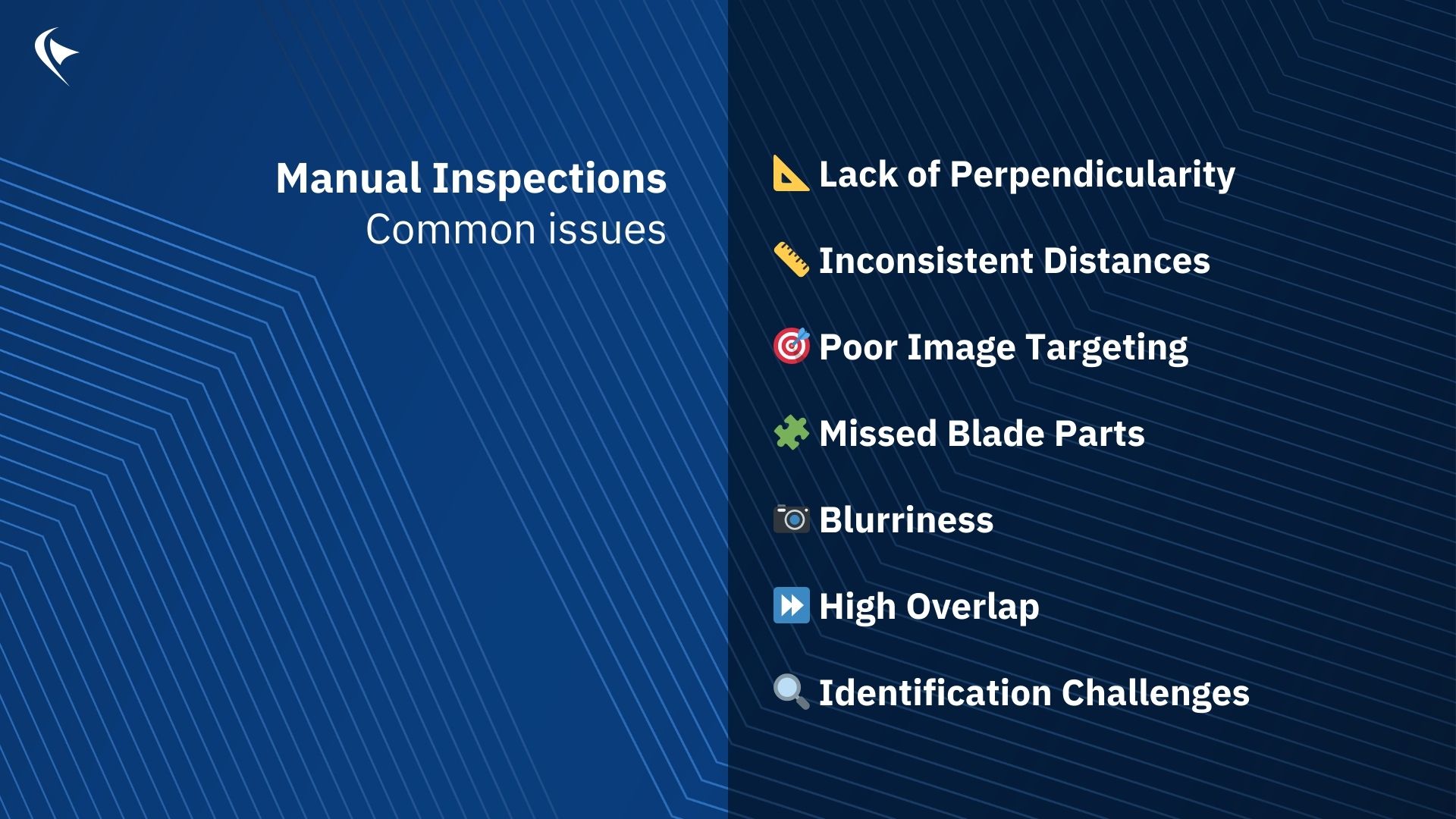Manual Inspections: Issues to avoid & Tips
Ah, the enduring debate: autonomous versus manual flights! At Perceptual Robotics, we prioritise automation, but we also understand the dedication to manual flights and the apprehension about transitioning to autonomous solutions. That’s why we also offer full support for processing data collected during manual inspections.
Let’s explore some tips on how you can obtain the best data through manual inspections and integrate with our Artificial Intelligence to streamline processes and ensure the highest quality of your results.
Main issues:
📐Lack of Perpendicularity: Locating damages and estimating their size accurately is challenging without perpendicular images.
📏Inconsistent Distances: Varied distances lead to inconsistent image quality, hampering analysis.
🎯Poor Image Targeting: Off-centred images can delay data processing significantly disrupt the analysis process.
🧩Missed Blade Parts: Incomplete inspections compromise data accuracy.
📷Blurriness: Clear images are essential for precise damage assessment.
⏩High Overlap: Excessive overlap prolongs processing time without adding value.
🔍Identification Challenges: Accurate identification of blades and side is crucial for analysis.
Tips:
📐Ensure Perpendicular Images: Capture images moving the drone along the blade to ensure perpendicularity instead of capturing several images from the same position.
📏Maintain Consistent Distances: Ensure uniform distances for consistent image quality. Do not zoom in and out.
🎯Improve Targeting: Center blades in images for effective analysis.
🧩Thorough Inspections: Ensure you have full coverage of each blade, from root to tip.
📷Focus on Clarity: Take clear images to facilitate accurate assessment. Position the WTG adequately with regard to sun position.
⏩Reduce Overlap: Keep image overlap between 12.5% and 20% for efficient processing.
🔍Enhance Identification: Properly identify blades and sides to avoid manual corrections and delays.
Rest assured manual flight enthusiasts, we appreciate your efforts! However, as technology evolves and the need for handling more and more data continuously grows, it’s time to consider transitioning to autonomous flights for hassle free inspections, consistent results, enhanced safety and reduced downtime.
Let’s embrace the future together!
